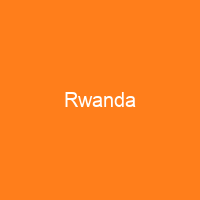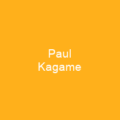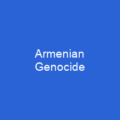Rwanda: A Landlocked Gem in East Africa
Imagine a country nestled between Uganda, Tanzania, Burundi, and the Democratic Republic of Congo—this is Rwanda, officially the Republic of Rwanda. Is it just me, or does this description make you curious about its rich history and vibrant culture?
The Geography: Mountains and Savannas
Rwanda’s landscape is a tapestry of mountains and savannas, with a temperate to subtropical climate. Is it any wonder why it’s often referred to as the ‘Land of a Thousand Hills’? This elevation gives Rwanda a cooler climate compared to its equatorial neighbors, making it an ideal place for agriculture and tourism.
A Rich History: From Kingdoms to Genocide
The history of Rwanda is a complex web of kingdoms, colonization, and conflict. Can you imagine the intricate social structures that existed before western colonization? The Twa, aboriginal pygmy hunter-gatherers, remain in Rwanda today, while Bantu groups migrated to the region between 800BC and 1500AD.
The Kingdom of Rwanda was established in the 15th century under King Gihanga. By the 19th century, King Kigeli Rwabugiri had expanded the kingdom significantly. However, the 20th century brought a dark chapter to this land, with the genocide of 1994 that killed an estimated 500,000-1,000,000 Tutsis and Hutu moderates.
Modern Rwanda: A Nation Rising from Ashes
Since then, Rwanda has experienced rapid economic growth. Is it possible for a nation to rebuild itself after such devastation? The country’s economy is based on subsistence agriculture and major cash crops like coffee and tea, with tourism being a growing sector.
The government has implemented various measures to reduce poverty and improve life expectancy. However, the country remains a de facto one-party state ruled by the Rwandan Patriotic Front (RPF), with elections manipulated through various means. Is this a fair system for its citizens?
Economic Growth and Challenges
Rwanda’s economy has grown significantly, but it still faces challenges such as multidimensional poverty affecting 48.8% of the population. Major export markets include China, Germany, and the United States. Despite this, agriculture remains a crucial sector, with more than 400,000 Rwandans relying on coffee plantations.
The industrial sector contributes 14.8% of GDP, including cement, agricultural products, and mining. The service sector accounts for 43.6% of the country’s GDP, with tourism being a growing economic resource. However, the media landscape is restricted, with limited press freedom, and there are concerns about political repression.
Nature and Wildlife: Biodiversity Hotspot
Rwanda’s natural beauty is breathtaking. The country is characterized by high biodiversity, with montane forests occupying only one-third of its territory. National parks like Nyungwe, Volcanoes, and Akagera contain unique vegetation and wildlife such as bamboo, moorland, acacia trees, giraffes, elephants, and mountain gorillas.
The eastern border region consists of savanna plains and swamps, while the center is dominated by rolling hills. Nyungwe Forest boasts thirteen primate species including common chimpanzees and Ruwenzori colobus arboreal monkeys; the Ruwenzori colobus move in groups of up to 400 individuals, the largest troop size of any primate in Africa.
Healthcare: A Priority for Development
Rwanda’s healthcare system has seen significant improvements. President Kagame made it a priority under the Vision 2020 development program. The government devolved healthcare financing and management to local communities through health insurance providers called mutuelles de santé.
In recent years, Rwanda has seen improvements in life expectancy, under-5 mortality, and tuberculosis incidence. However, the country still faces challenges such as a shortage of medical professionals, with only 0.84 physicians, nurses, and midwives per 1,000 residents.
Culture: A Blend of Traditions and Modernity
Rwanda’s culture is a blend of traditions and modernity. The population consists of three groups: Hutu, Tutsi, and Twa. Education is free in state-run schools for nine years (expanding to 12 years), but completion rates are low, and repetition rates high.
Music and dance are an integral part of Rwandan ceremonies and social gatherings. The country has a growing popular music industry influenced by African Great Lakes and American music. Traditional arts and crafts include woven baskets, pottery, wood carving, and imigongo, a unique cow dung art. Rwanda does not have a long history of written literature but has a strong oral tradition.
Conclusion: A Nation on the Rise
Rwanda is a nation that has risen from the ashes of genocide to become a model for economic and social development in Africa. Despite its challenges, it continues to grow and improve, making strides in healthcare, education, and tourism. Is Rwanda’s story one of resilience and hope?

You want to know more about Rwanda?
This page is based on the article Rwanda published in Wikipedia (retrieved on January 28, 2025) and was automatically summarized using artificial intelligence.






